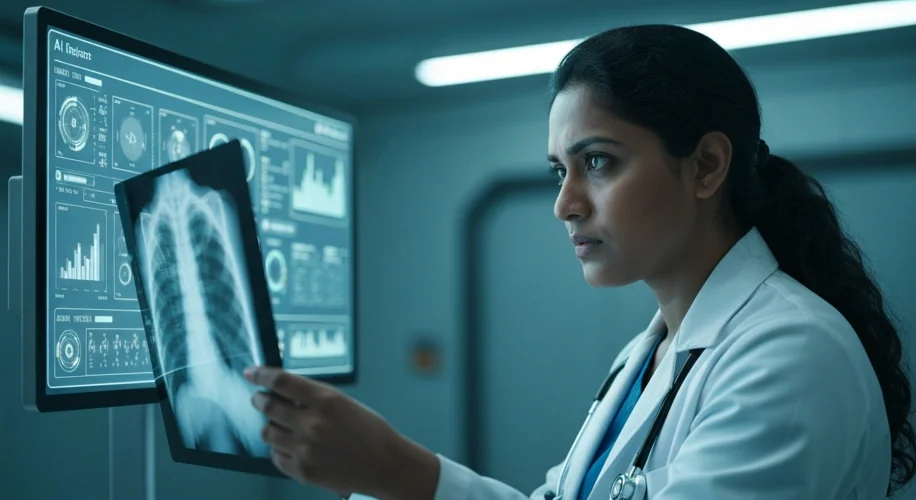Okay, so you’ve probably seen the headlines: AI is diagnosing diseases better than doctors. It sounds incredible, right? Like something out of a sci-fi movie where a super-smart computer can spot what human eyes miss. But let’s pump the brakes a bit and get real about what’s actually happening with AI in medical diagnosis, especially when it comes to things like reading X-rays.
When we hear that an AI model can detect a tumor on an X-ray with, say, 95% accuracy, it sounds like a massive leap forward. But here’s the catch: how was that AI trained? Most of these groundbreaking models are trained on massive datasets of medical images that have already been reviewed and confirmed by human experts – radiologists, in this case. So, the AI isn’t necessarily discovering something new; it’s learning to recognize patterns that humans have already identified as important.
Think of it like this: imagine you want to train a student to spot a specific type of bird in photos. If you show them thousands of photos, each clearly labeled with “That’s a robin” or “That’s a blue jay,” they’ll get really good at identifying robins and blue jays. But if you suddenly show them a picture of a rare, unidentifiable bird, they might struggle. The AI is getting incredibly good at recognizing the ‘robins’ and ‘blue jays’ of the medical world – the diagnoses that have already been established and documented.
This isn’t to say AI isn’t useful. It absolutely is. AI can sift through images much faster than a human, potentially flagging areas of concern that a tired radiologist might overlook. It can act as a second pair of eyes, increasing efficiency and possibly reducing errors. But saying it outperforms doctors in a vacuum might be a bit misleading. It’s more accurate to say it’s becoming a powerful tool that assists doctors.
The real challenge and the next frontier for AI in medicine is its ability to handle the ambiguous cases, the early-stage symptoms that aren’t clearly defined, or the rare diseases that don’t have a huge dataset associated with them. That’s where genuine diagnostic advancement, beyond pattern recognition, will truly be tested.
So, while AI’s progress in medical diagnosis is impressive, it’s important to understand the nuances. It’s a powerful assistant, a super-powered pattern-matcher, but for now, it’s not replacing the critical thinking, nuanced understanding, and the human element that doctors bring to the table. The hype is real, but the reality is a bit more complex – and arguably, still very exciting for the future of healthcare.

